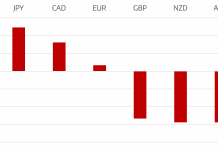
Virtual data rooms (VDR) can be pricey. When you are in need of a virtual data room, how should you go about pricing them out? You’ll want to ask some very important questions before you make a decision on how to choose these rooms and what they offer for virtual data room pricing.
First Step to Securing a Virtual Data Room Pricing
Virtual data rooms are now known for being utilized by financial advisors as a safe place to store documents. As a safe place for storing and sharing large amounts of documentation, they are able to give their clients a great place to safely share vital financial information.
While it’s safe for sharing information and files, it is also a great place for aspects of dealmaking to take place. Document management is an important part of the M&A dealmaking process. The one thing that advisors should keep in mind is that not all M7A work is the same. Before you choose a virtual data room you’ll need to understand how these rooms work. This means asking the right questions before you secure one.
It’s important to review how they work, and to learn the specifics about these rooms before you secure one for use.
How to Determine if a Virtual Room is Right for You
There are true providers of these virtual data room services. This means that you’ll need to understand how the pricing works.
Much like securing a cable TV plan or internet plan, you’ll want to ask questions of these providers to understand how their pricing works. Much like a cable TV provider may offer specific channels, there are specific features that you’ll want to look at when reviewing VDR’s.
Here are some important things to ask as you review the expense involved with choosing a VDR.
· Page
· Number of users
· Storage size
· Time involved in the project
Charging by the page is a standard, mainly because this is how the information is stored. Pages in a VDR are like pages in a book. The more pages there used the higher the expense. The same is true of the number of users as well. This could be that you’ll want to ask about the number of company users, are how many of your clients can use this VDR at a time.
The overall storage size of a VDR is important as well. How much information can you store? Number of pages, as well as overall data is important when asking about virtual data. Virtual data is going to be a growing trend for as long as professionals need to make good use of storing information in the cloud.
Having storage space is important because it means that you can go into a VDR service with the expectation of knowing how much information you can store. Advisors that wish to use VDR’s for their clients may be able to start out with a certain level of storage space, but they should also plan ahead for what they don’t know they’ll need yet. As the number of clients begins to grow, so will the amount of storage space.
What is the Value of Support?
Support for your VDR is also critical. What type of support is being offered for the VDR that you are using for your business and clients? As a customer, what do you expect from your administrator?
Deals in the M&A circle are not always 9 to 5. When information is put into a VDR, it can be accessed around the clock when it’s convenient for everyone. This means when users on all sides can see the information, important decisions can be made sooner rather than later.
Virtual data room pricing is not a one trick pony. If there were only one aspect of a VDR to learn and master it wouldn’t be a big deal. However, there are several aspects of a VDR that you’ll need to learn about and ask about before you make your final decision. Once you review what several VDR’s have to offer, and what is important for your firm, you’ll begin to see that they are all unique. You’ll then be able to make the best decision for your firm and your clients.
This is an article provided by our partners network. It does not reflect the views or opinions of our editorial team and management.
Contributed content
HedgeThink.com is the fund industry’s leading news, research and analysis source for individual and institutional accredited investors and professionals





































